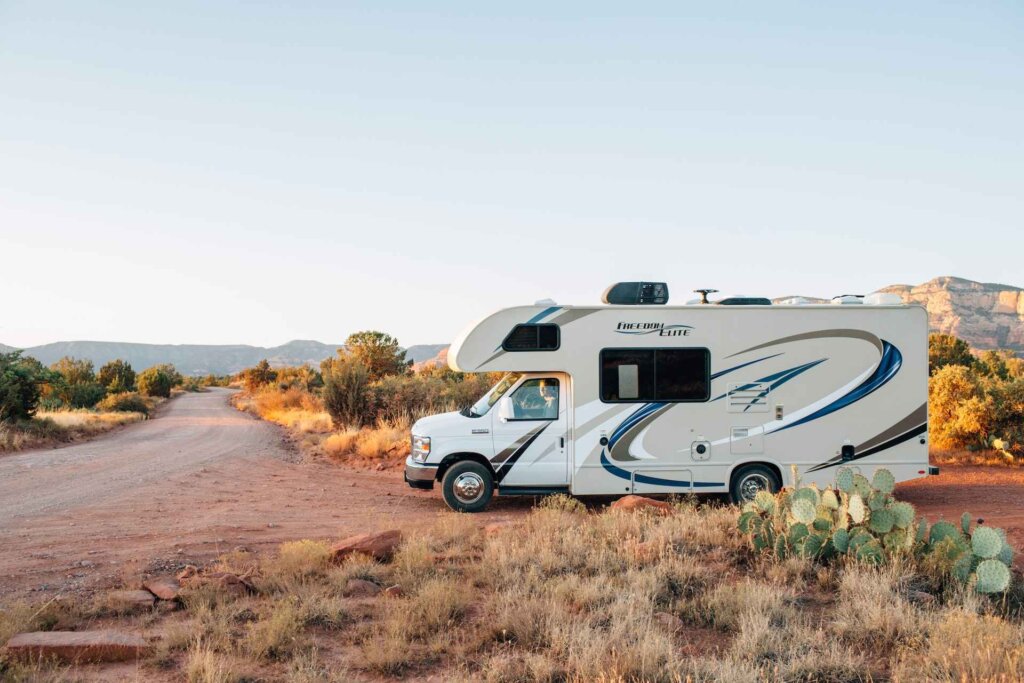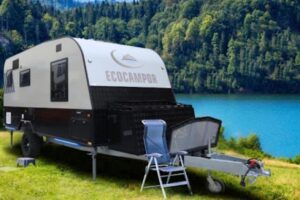All this to say, if you are living full-time or even just traveling in a recreational vehicle (RV) in the United States during the summer, you are probably going to want an air conditioner (AC). If you have a big rig like a fifth-wheel travel trailer or a class A motorhome, you may need two AC units to keep your rig sufficiently cool.
It should be no surprise that AC units consume massive amounts of energy. They are usually the most power-hungry appliance in an RV, and because of this, special attention must be paid to AC units in regard to their power consumption.
How much power is needed to run a camper AC? How about two AC units? Can a generator power an AC in an RV?
All valid questions.
In today’s article I’ll provide some basic information about how air conditioners work in an RV, their power requirements, and how to figure out those power requirements. I’ll also give an overview of RV generators, discuss the pros and cons of built-in and portable generators, and determine what size generator is needed to power two AC units.
RV Air Conditioners
The term “air conditioner” refers to an appliance or system that is designed to cool an enclosed space by removing heat and humidity from the air within that space. The primary purpose of an AC unit on a travel trailer or motorhome is no different than a residential AC. They exist to cool you down and keep you comfortable (and safe!).
Most RV air conditioners are mounted on the roof of the rig, installed on a 14-inch square roof penetration that allows air to pass through the unit.
When turned on, the AC unit takes air from the interior of the rig, sends it through the unit to remove heat and moisture, and then pushes it back into the camper, cool and dry.
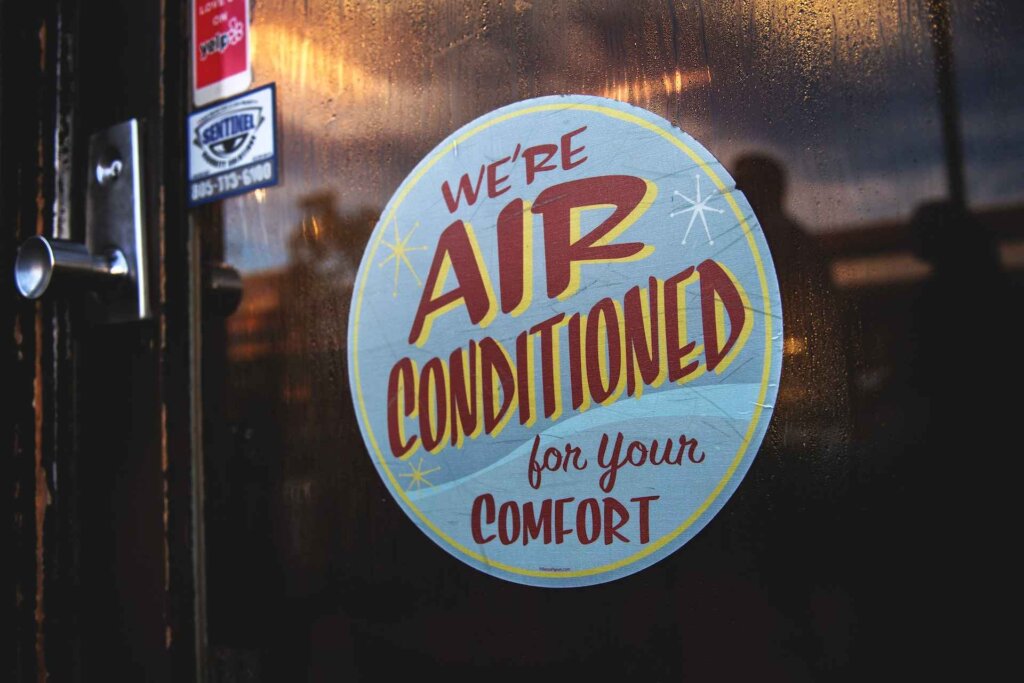
Power source
Cooling air is not easy, and due to the intensity of the job, AC units need steady high-power electricity to function. This power comes in the form of 120-volt alternating current power. Any RV with an AC unit should have a 120-volt power circuit.
There are some companies making air conditioners that are powered with 12-volt direct current electricity. These units are expensive and uncommon though, so it’s usually safe to assume an RV with a roof mounted AC is running 120-volt power.
An RV air conditioner can be powered from several sources. The safest and most reliable way to power an AC on an RV is through shore power provided by a campground or building. Shore power provides unlimited amounts of the 120-volt electricity that AC units crave.
Air conditioners can also be run using power generators. A power generator takes liquid-fuel, usually in the form of gasoline or diesel, and converts it into 120-volt electricity that can be used immediately or transferred to a battery for storage.
RV generators come in two forms:
- Built-in
- Portable
A built-in RV generator is designed and integrated into the main body of the camper during the manufacturing process. Being built into the rig from the start allows the manufacturer to provide convenient wiring and circuitry for the RV owner. These generators are easy to turn on and off, and do not require running extension cords around the RV and campsite.
Portable generators are not built into the RV and are purchased separately from the camper. Some portable generators are designed specifically for RV use, but most RVers buy multi-purpose generators for their power needs. Portable generators also produce 120-volt power using liquid fuel.
The main difference in use between a built-in and a portable generator is that portable units must be positioned a reasonable distance from the RV, with power cords running between the generator and rig.
Travel trailers typically do not have built-in generators and must rely on portable units. Motorhomes are commonly manufactured and sold with built-in power generators.
What size generator is required for two AC units?
A 6,000 watt generator is recommended to power two AC units on an RV. By powering your AC units with such a large generator, you can ensure you have enough electricity available to use other RV appliances and still protect your equipment from dangerous power surges.
As I said above, air conditioners require a whole lot of energy.
So much in fact, that some RVers with small campers like class C motorhomes and campervans have to be careful about what appliances they use simultaneously. If one person is heating up a microwave burrito and their camp partner flips the AC unit on, a breaker may flip and shut down power to the whole circuit.
An event like this happens when the two appliances are on one circuit (never a good idea, AC units should have a dedicated circuit), and the AC unit is turned on while the other appliance is running.
Air conditioners require a surge of energy to power up, often referred to as a startup surge.
This surge of power gives the generator the extra kick of power needed to turn the motor over and fire the machine up. Car engines are similar in their need for extra power to start. This is why car power-windows, radios, and seat adjustments all pause for the brief moment it takes to fire the engine up. Their energy is temporarily made available for the engine to use.
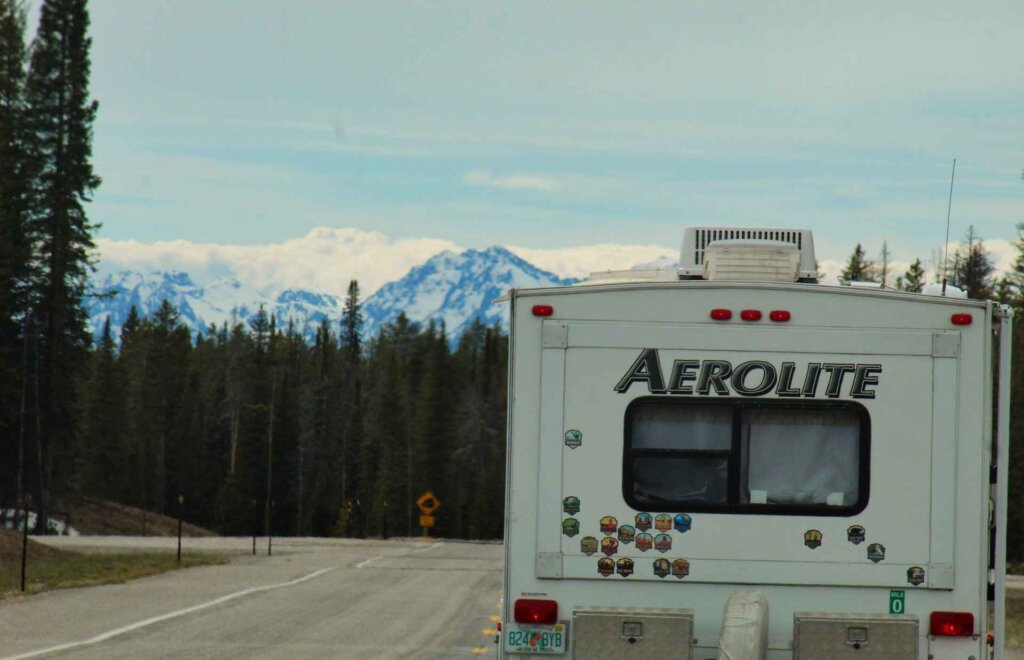
Count your watts
Wattage is the most important unit of measurement to pay attention to when determining the size of generator needed to run two AC units.
A watt is a unit of measurement that indicates the rate at which energy flows.
Appliances that run off electricity are given a watt rating that indicates how much power it requires. The higher the wattage, the greater the amount of electrical energy that the appliance will use over a period of time.
Most RV air conditioners operate in the 1,200 to 1,500-watt range but can surge to 2,000 watts or higher during startup. With this in mind, if you have two AC units combining to require 2,400 to 3,000 watts but can potentially surge to over 4,000 watts, you will want a 6,000-watt generator.
Why 6,000 and not 4,500 or 5,000? Using a 6,000-watt generator guarantees that both ACs can startup while still leaving some wattage for other appliances such as lights and power outlets.
Built-in vs portable generators
RV generators are mostly for boondocking and at RV parks that do not have power hookups. Motorhomes are more likely to have a built-in generator installed, while travel trailers and truck bed campers typically rely on portable generators.
Built-in generators
A built-in generator must be installed in a vented compartment, outside of the main living area in an RV. The vents in the compartment allow gasses produced by the generator to safely disperse.
During installation, the generator is wired into the main RV wiring harness. This ensures that once fired up, the generator can power all appliances and pieces of equipment in the motorhome or camper without a need for additional cords or wires to be run.
Many built-in generators are tapped directly into the main fuel tank of the rig, eliminating the need for manual refueling. It is not uncommon for these RV power generators to have a power output range of 2,500 to 12,000 watts.
Portable generators
Portable by design, these useful generators can be positioned far from a rig to ensure safe ventilation of gasses and to keep noise interference from the generator to a minimum.
Once set up, a heavy-duty power cord must be run from the power output terminal on the generator to the shore power plug on the RV. It’s smart to mark the path of the cord with something bright and highly visible, as it can become a campsite tripping hazard.
Most portable generators on the market have a power output range of 1,000 to 12,000 watts. Bigger generators certainly exist and can be bought, but most RVers never need more than 10,000 watts anyway.
Built-in generator pros and cons
Motorhome users love built-in generators for their high electrical output and seamless integration with other RV systems. With a push of a button, they can fire up their generator and have power flowing to the whole coach.
Requiring such minimal effort to start, these convenient generators provide accessibility to people who like automated systems and folks who are disabled or differently abled. On that theme, a massive advantage to built-in generators being tapped into the main RV gas tank is that they never have to be manually refueled.
A significant drawback to owning a rig with a built-in generator presents itself when the generator needs maintenance or repairs. Being integrated into the body of the RV can make certain components of the device difficult to reach. This can cause frustrating or impossible repairs for DIYers and expensive repairs for those who rely on professional technicians for repairs.
Portable generator pros and cons
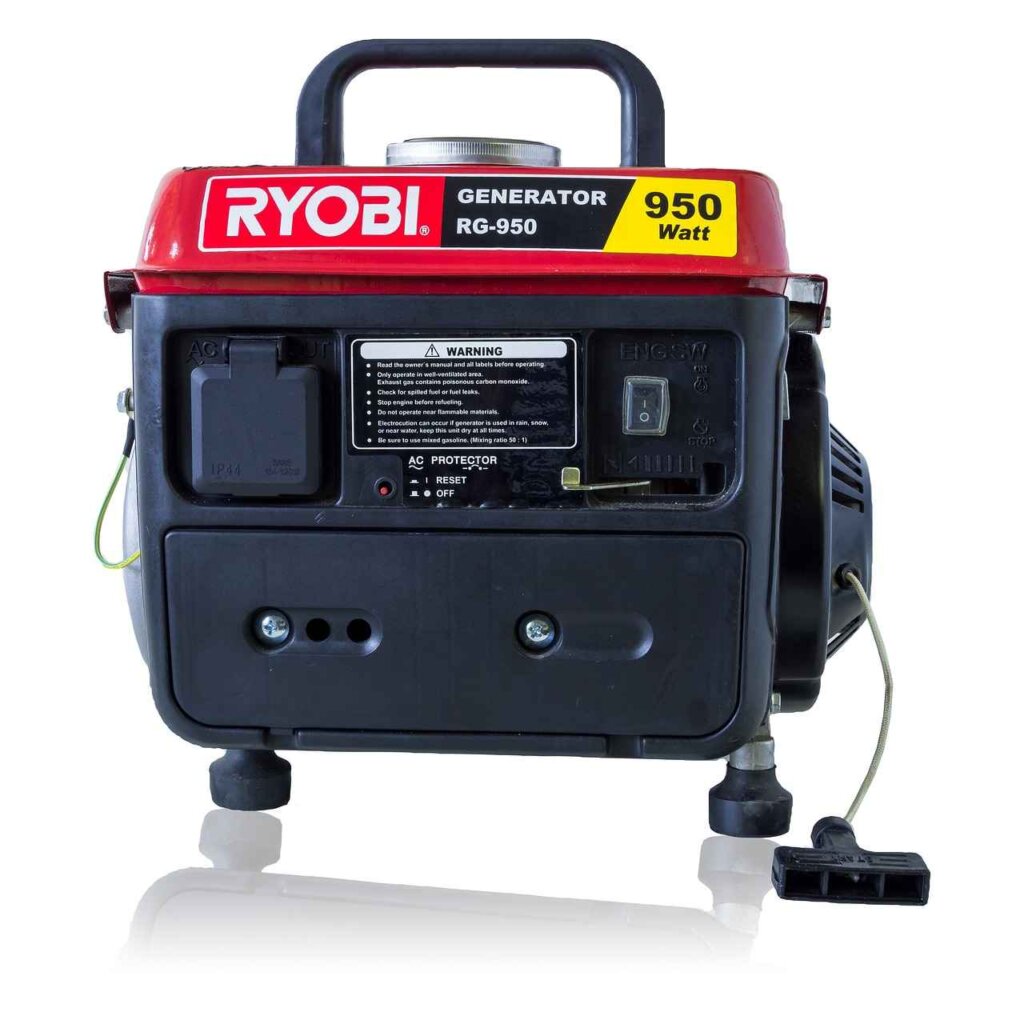
Okay, I’m going to be shamelessly biased here for a moment: I think portable generators are super cool. Maybe that makes me a nerd, hard to say.
The versatility of portable generators makes them a worthwhile investment for almost anyone, not just RVers. Buying a portable generator for your travel trailer is buying a portable generator for every aspect of your life.
I love being able to repurpose my RV generator for tasks other than providing power while camping. I’ve used my generator to power tools while off-grid building, to power lights while urban snowboarding, and as a backup source of electricity in case my house experiences a power outage.
The primary disadvantage of portable generator ownership is their power output. The majority of affordable, easy-to-move portable generators simply cannot compete with the power output offered by built-in generators.
They also require a lengthy setup process, including loading and unloading from the RV, refueling, and running heavy power cords between the generator and camper. Not ideal after a long day on the road.
Safety precautions for RV generator use
Although power generators are relatively user-friendly and easy to use, most people do not use them very often, leading many people toward reckless generator use.
Generators are powerful machines. When used improperly, serious injury or death can easily occur.
Take the following precautions when operating a power generator:
- NEVER USE A GENERATOR IN AN ENCLOSED SPACE. NEVER RUN A PORTABLE GENERATOR INSIDE OF AN RV. Doing so can lead to carbon monoxide poisoning and death.
- Always set up a portable generator at least 20 feet away from your rig, with the exhaust pointing away from camp.
- Don’t operate a generator in the rain. Simple boxes and tarp-tents can be constructed to protect generators from the elements.
- Turn off your generator and let it fully cool down before refueling. This is a good best-practice for all motors.
- Do not touch a running generator. Many components of a generator heat up during operation, which can lead to nasty burns when touched.
**Disclaimer**: The best source of generator safety information is the instruction manual provided with the unit itself. Motorhome owners should refer to the motorhome’s owner manual for generator operation and safety information.
Frequently asked questions
Check out some questions our readers have asked us about RV generators and how to keep their RV air conditioning running.
Do inverter generators provide more power?
Inverter generators do not provide more power per se, but they are acclaimed for producing high-quality, consistent power that poses low risk of damaging electronic devices and equipment.
Does generator size determine power output?
A large generator is not guaranteed to be more powerful than a smaller one, but it’s safe to assume it will be. Typically, generators increase in size as their power output increases.
How do I minimize the noise my generator makes?
Make yourself a well-vented, soundproof box to cover your generator with during use. Common building materials for these boxes include 3/8″ plywood, and 1 1/2″ rigid foam board.
Conclusion
That’s all folks!
If this article has triggered curiosity about generators and how to determine the best type and size of generator for your lifestyle, please visit the links embedded in the text above. They’ll take you to some of my more thorough guides on RV power and RV generator use.
Please be careful while using electrical equipment in your RV. Educate yourself about RV safety and make sure your camping crew is aware of any dangers around the campsite.
Happy camping!

